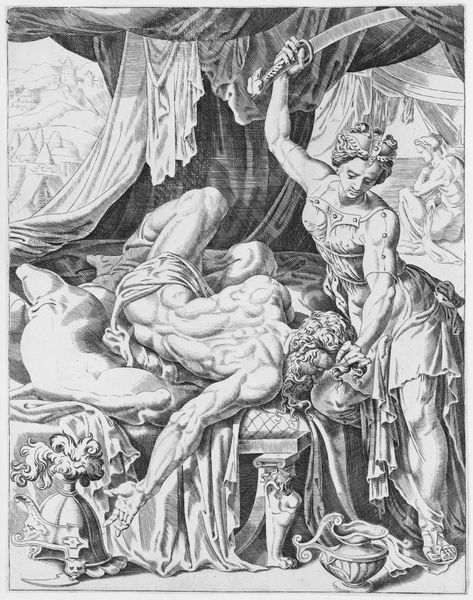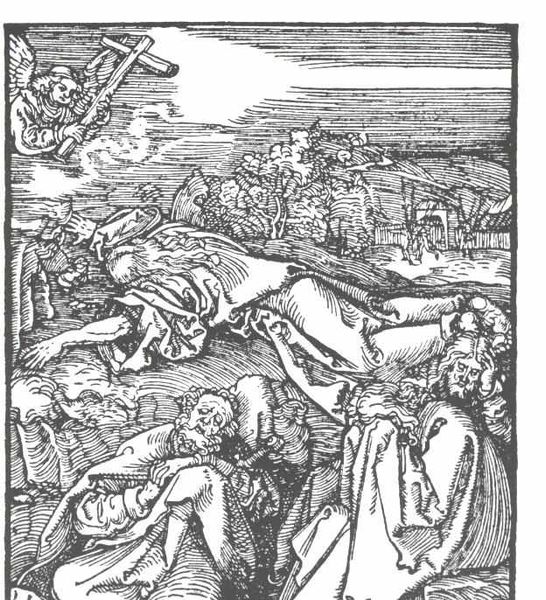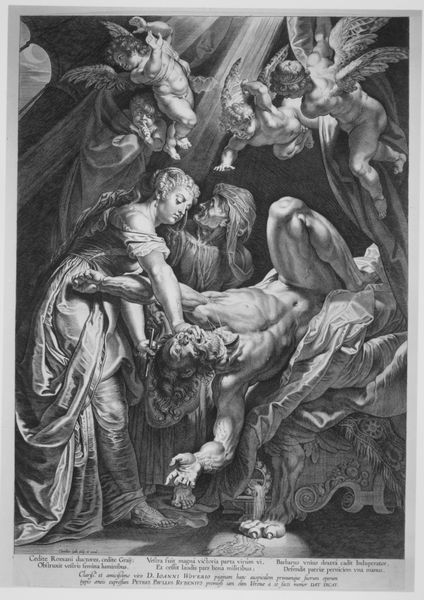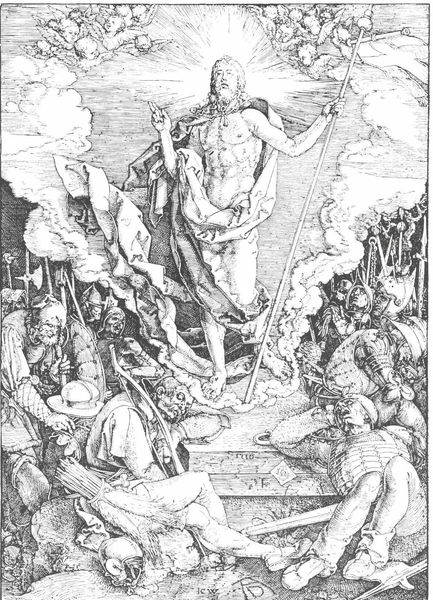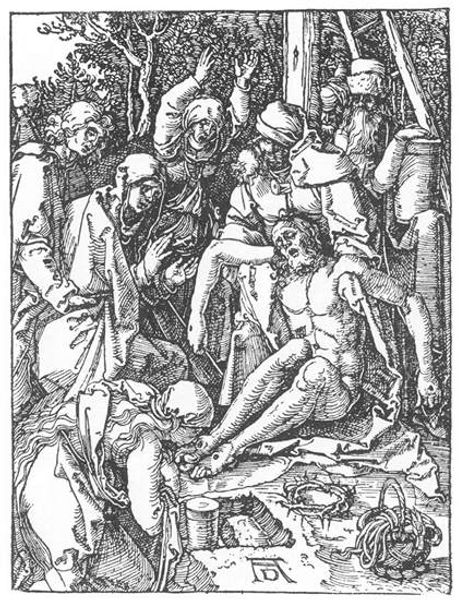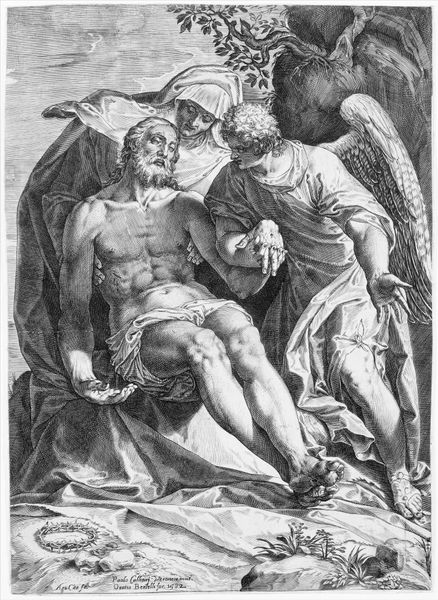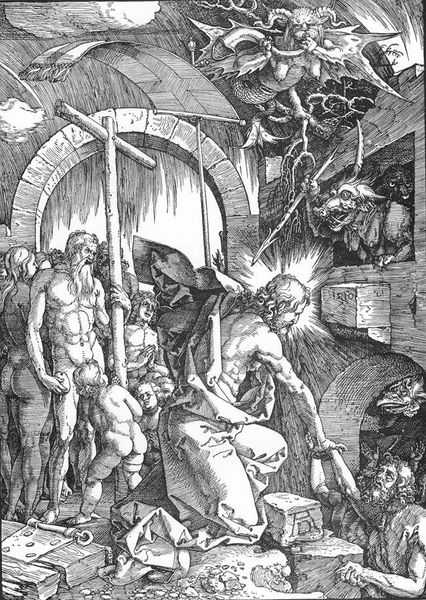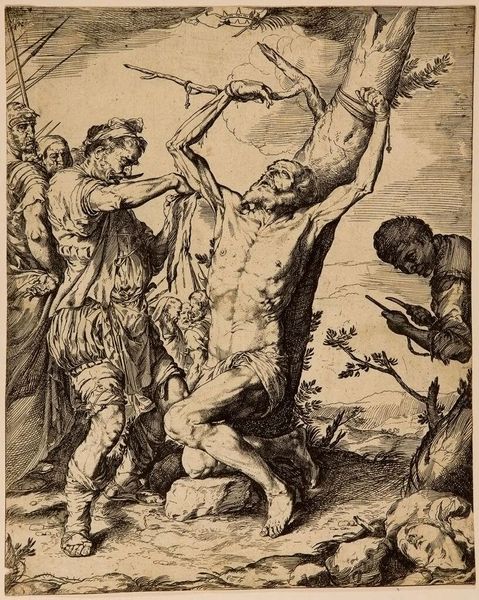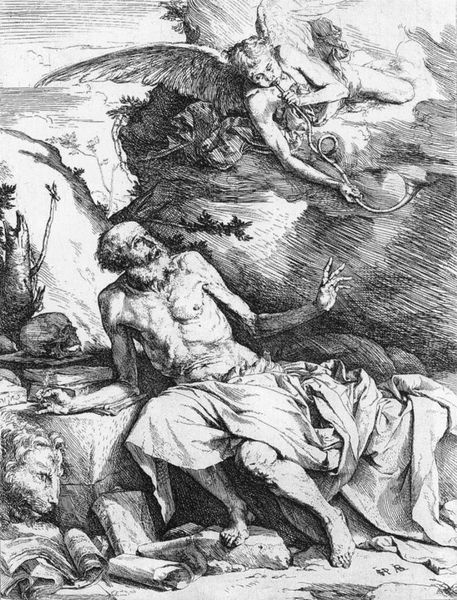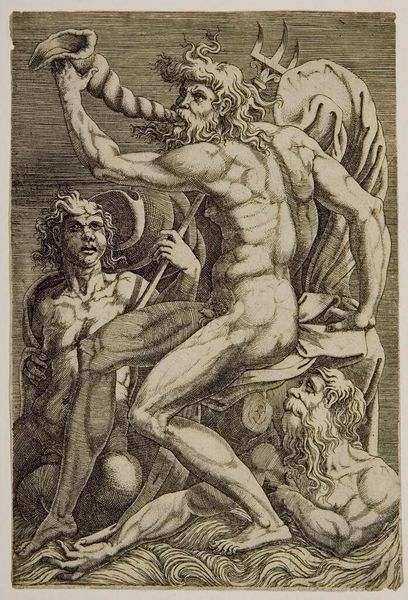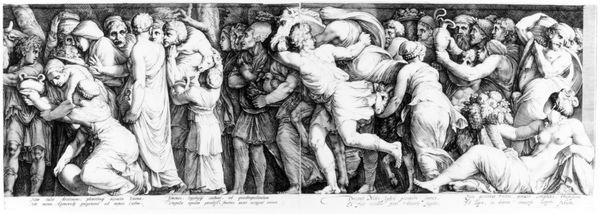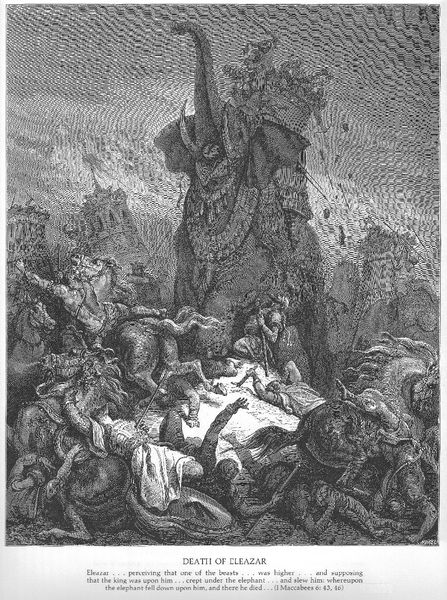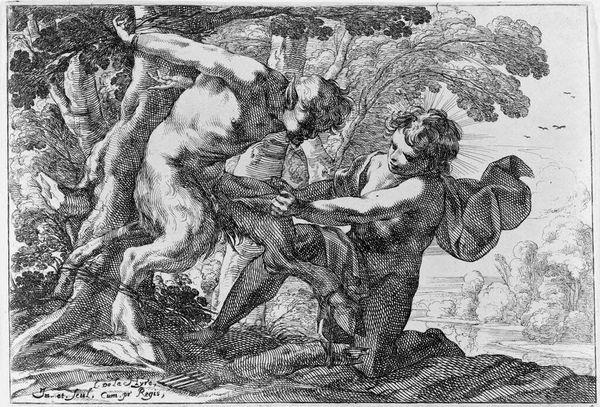
Dimensions: 15 13/16 x 12 15/16 in. (40.1 x 32.9 cm)
Copyright: Public Domain
Curator: Good day. We're here at the Metropolitan Museum of Art, looking at Hendrick Goltzius's engraving, "Hercules and Cacus," from 1588. Editor: Wow, there's an intensity here. A swirling vortex of figures. Brutal! It's packed with dramatic light and shadow, and the dynamism is striking. Curator: Goltzius really demonstrates mastery of the burin there, doesn’t he? You see how those swelling lines create musculature, the sheer physicality of these figures. And it's not just about aesthetic form. It embodies power structures—Hercules, the ultimate symbol of heroic strength, literally crushing Cacus. The method really reinforces the message, wouldn't you agree? Editor: Absolutely, but consider the pure compositional structure. The interlocking forms, the anatomical exaggerations; it's practically a masterclass in Baroque aesthetics! Note how his sophisticated understanding of anatomy creates an interplay of form and contrast. This complex web of linear marks seems to bring the figures to life. The light catches his flexing back beautifully, emphasizing his divine origin. Curator: Of course, the image doesn't exist in a vacuum. Cacus, in the myth, represents unrestrained greed and theft—he stole Hercules' cattle! Goltzius is engaging with classical ideals, but also very directly addressing societal concerns regarding ownership and rightful possession, very much in keeping with the anxieties of late 16th century Europe. Consider the intended audience and the social environment in which they viewed these allegories of morality and civic responsibility, as disseminated via printed materials. Editor: That is compelling context. Yet without understanding of structure, one could argue there are symbolic choices about depth and clarity. Take a close look at the treatment of Hercules himself. Notice how the details are softer to lead our eye into an open mouth in Cacus' neck where we sense pain, rage, terror and death. And there's a real contrast here in surface texture, right? Between the soft rendering of their muscles. The whole effect amplifies his torment. Curator: Well, when you focus on materiality you find all sort of ideas that can give depth and insight to any artwork, indeed. Editor: Agreed, indeed. The ability to isolate elements offers valuable context!
Comments
No comments
Be the first to comment and join the conversation on the ultimate creative platform.
